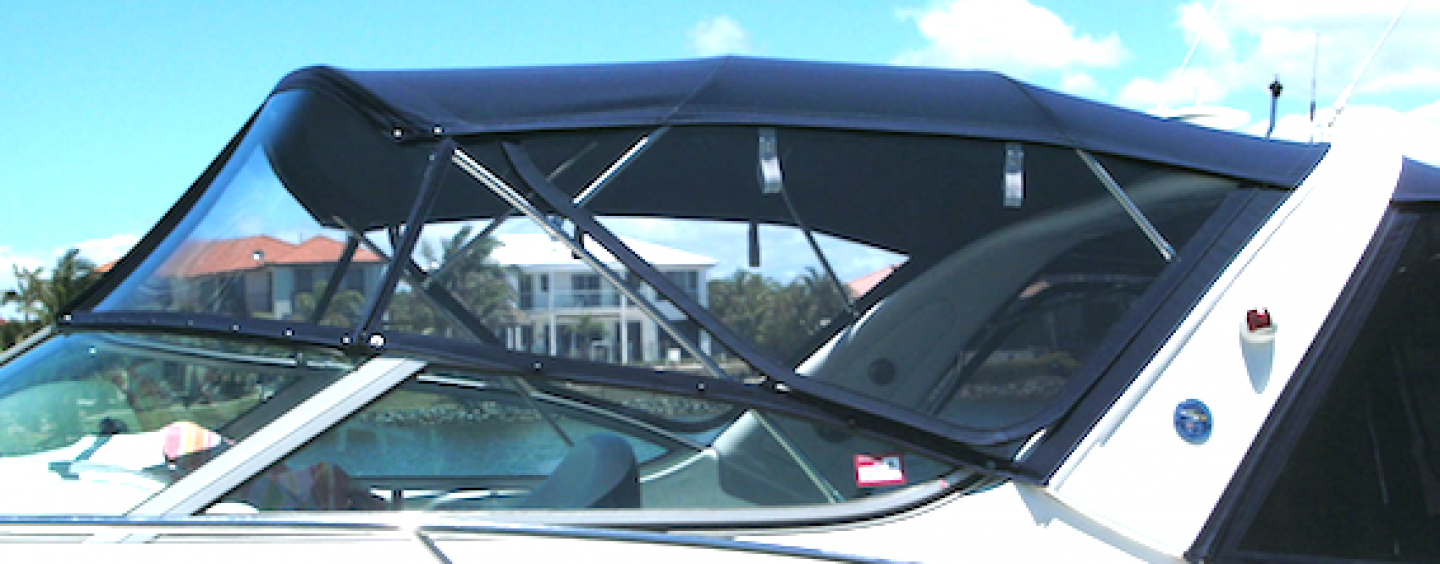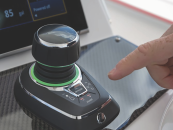Would you like to preserve the value and longevity of your boat? Investing in a well-made boat cover contributes to your boat remaining an asset, rather than an ongoing drain on financial resources.
Our marine environment is harsh, and good quality covers will protect your boat when you are out at sea, moored, on a trailer or even in a storage facility.
A well-made cover will not only safeguard your boat’s exterior and interior from the elements and debris, but it will protect your instruments as well as keeping out those uninvited multipede guests. Gone are the days when the versatile tarp was our only choice. Today, we have access to superior materials and specialist marine trimmers who can make you a cover that will provide years of protection to your asset.
A reputable marine trimmer will only use top-quality canvases, such as Sunbrella or Weather-Max 80 with a lifetime PTFE thread brand like Profolin, Healius or Tenara.
Poorly made covers will often be made of fabric that is not able to withstand the harsh marine environment and will perish quickly under UV rays. When old style nylon and polyester threads are used, it results in weak seams which deteriorate and breakdown very quickly in marine environments. An oversight of reinforced abrasion points will cause the cover to rub against parts of the boat initiating frays and rips.
Avoid the one-size-fits-all solution and poor-quality products. A cheaper quote generally means cheaper materials, and cheaper materials often result in a low-quality boat cover.
There is camping, glamping, and now bamping (boat camping). Camper covers are extensions attached to a bimini to create another room on your boat providing you with comfortable overnight accommodation. They are a great way to keep insects and weather out of the area.
Paul Tuesley from Runaway Bay Marine Covers says, “The design of the camper covers should be appealing to the vessel as well as practical. All the covers we make are custom-made so we try to achieve both of these when designing the covers for the client. We use quality materials, fasteners and thread that will last the distance.”
Paul and his team add mesh screens and doorways to the rear camper covers for ease of boating. “Our covers have the ability to be rolled up or completely removed.” At Runaway Bay Marine Covers, they only use a long lasting PTFE thread.
Other popular boat covers are the bimini and cockpit covers. A bimini is an open- front canvas top supported by a collapsible metal frame to provide shade and protection from the weather. The cockpit cover is an extension of the bimini offering more coverage, a necessity when you are out boating for the day to protect you and your guests from the sun, rain and wind. They keep the cockpit area, and ropes and instruments dry.
The frames for biminis and cockpit covers are typically made from stainless steel or aluminium as these are non-corrosive materials. Stainless steel is stronger and aluminium is lighter giving both positives and negatives, so talk to your trimmer to understand what is best for your boat.
Biminis are the best cover for fishing boats as they provide sun protection while you are sitting around waiting for the big fish to bite. They are easy to fold down to enjoy the sunshine and cast off without getting hooked up.
Midge screens are essential at many anchorages throughout Queensland. They allow air to come into the boat through the tiny squares which are small enough to keep midges and mozzies out.
A budget fix for portholes and hatches is to buy a sheet of flyscreen from Bunnings and cut it to suit the open space, attaching double-sided Velcro to keep the screen in place.
Another feature for lasting boat protection are clears. These are like windows providing visibility, protection and incoming light. The quality of the material has improved exponentially over the past twenty years with premium products like Strataglass® being scratch and swirl-mark resistant giving a beautiful clear view, out over the water.
When you design a boat cover, the main questions to ask yourself are, what is the primary reason for the cover? Would you like it to be water-resistant or waterproof? How much are you willing to pay and how long do you want the cover to last?
There are a large variety of colours available. Colour choice is a personal preference. You might like to colour-match with your hull or your pinstripe, or indoor and outdoor upholstery.
To maintain the longevity of your boat covers, it is good practice to hose them down with fresh water after you use the boat. For a deeper cleanse, apply a diluted liquid detergent on canvas, making sure to thoroughly hose out all residue.
Mr Sheen as well as other marine cleaning solutions stocked in your chandlery are an option for cleaning clears. Paul advises his customers to use Imar and Plexus. Always bring this question up with your manufacturer to ensure you are cleaning as per your warranty.
When rolling up canvases and clears, a good tip is to roll them toward the inside of the boat so they do not fill with water. Over time, stagnant water sitting in canvas and clears causes them to deteriorate and grow mildew.
It is well worth your time and money to have a chat with a qualified marine trimmer who will inform you how to best care for the cover they have made for your boat. Ask them about packages where they repair or upgrade your upholstery at the same time. Why not have the boat that is the talk of the anchorage?



























